This article highlights the essential skills that ABA therapists need to effectively support children with autism. Skills like empathy, effective communication, adaptability, and collaboration are so important! These abilities not only help create personalized treatment plans but also foster positive outcomes for the children, enhancing both the therapist's effectiveness and the child's development. Let’s explore this together!
When therapists bring empathy into their practice, it creates a warm environment where children feel understood and supported. Effective communication helps in building trust, while adaptability allows therapists to meet each child's unique needs. Collaboration with parents and caregivers is crucial, too, as it ensures everyone is on the same page. By focusing on these skills, we can truly make a difference in the lives of these children. We’re here to help you every step of the way!
In the world of Applied Behavior Analysis (ABA) therapy, the success of interventions relies not just on structured methods but also on the unique skills of the therapists. As the support landscape for children evolves, it’s essential to grasp what skills ABA therapists need to truly make a difference. This article explores the key competencies that drive effective therapy, showcasing how these skills can lead to better outcomes for children with autism.
But as families search for the best support for their little ones, what really defines success in ABA therapy? How can therapists adapt to meet the distinct needs of each child? Let’s explore this together!
At Rori Care, we truly believe that personalized treatment plans are essential for enhancing aba therapist skills in ABA practices. Our dedicated behavior analysts apply their aba therapist skills to conduct thorough evaluations, identifying each child's unique needs. This allows us to create tailored plans that feature measurable goals and evidence-based strategies. This customized approach not only makes treatment more effective but also fosters a stronger bond between the practitioner and the child, which enhances aba therapist skills and leads to significant improvements in behavior and social skills development. Did you know that research shows clinically meaningful improvements in adaptive behavior can be achieved in children with lower functioning levels after just 24 months of ABA treatment? This can really enhance their quality of life and independence!
We also embrace cutting-edge AI technology to make the therapy process smoother. With automatic progress report generation, we can free up 50% more time for direct youth treatment, which means our interventions remain responsive and effective. We’re all about ongoing evaluation and modification, continuously adapting our strategies based on each child's progress. Early intervention is crucial; it’s shown to yield particularly beneficial results for children on the spectrum. This empowers caregivers with the knowledge and tools they need to support their child's behavioral goals. Let’s explore this together!
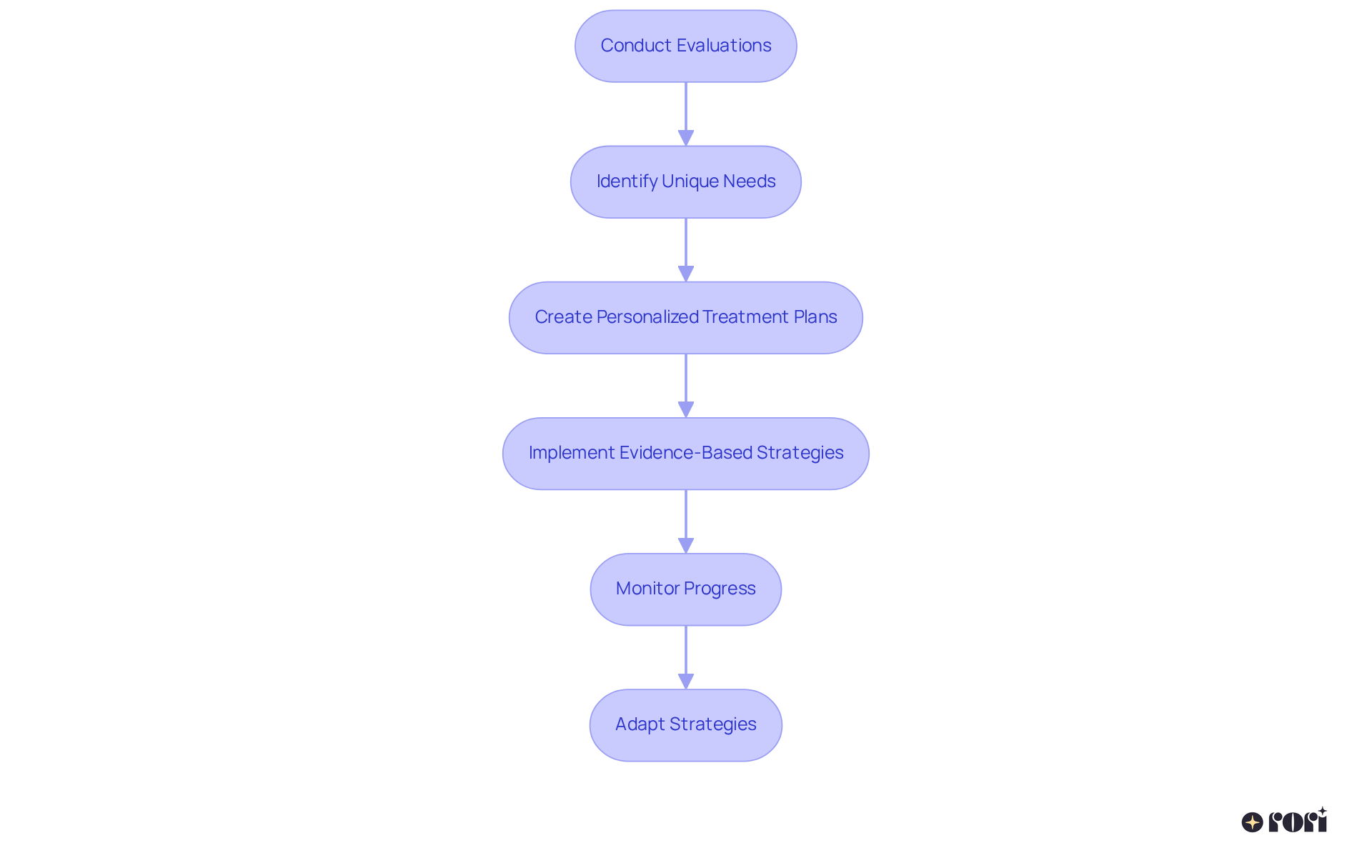
Effective data collection and analysis are essential components of ABA therapist skills. Gathering data on various behaviors and skills in a systematic way is crucial for evaluating how well interventions are working, which reflects the essential ABA therapist skills. By using methods like ABC data collection, clinicians can track the Antecedent, Behavior, and Consequence of actions. This helps us understand behavior patterns in detail. Not only does this process identify triggers for challenging behaviors, but it also allows us to measure progress over time.
Research suggests that collecting ABC data for at least two weeks is a great idea to accurately spot trends and patterns in behavior. This time frame helps professionals establish a baseline by recording how often, how long, and how intense behaviors are before starting any interventions. Such thorough documentation is vital, as it gives us a reference point to measure how effective treatment strategies are.
Moreover, looking closely at the information gathered helps healthcare professionals improve their ABA therapist skills to make informed changes to treatment plans, ensuring they meet the patient’s changing needs. Aiming for high levels of interobserver agreement (IOA)—ideally 80% or higher—boosts the reliability of data collection, giving us confidence in the insights we gain. Involving several observers, like counselors, educators, and parents, is essential for ensuring accuracy and dependability in data gathering.
Additionally, having clear definitions of observable behaviors is necessary for effective ABC data collection. This ensures that behaviors are measurable and recorded accurately. At Rori Care - ABA Therapy, we’ve incorporated AI technology to create automatic progress reports, freeing up 50% more time for treatment. Plus, statistical analyses on ABC data can reveal significant differences in behavior across different treatment phases, offering deeper insights into how effective interventions are.
By consistently observing and analyzing data, professionals can enhance ABA therapist skills and interventions, leading to better outcomes in behavior, social skills, and autonomy for individuals with autism. It’s encouraging to note that progress is seen in 90% of youngsters when the recommended hours are fully implemented, especially with active caregiver involvement. Parents can play a big role in this process by keeping an open dialogue with counselors and recognizing the importance of regular data gathering in their child’s treatment journey. Let’s explore this together!
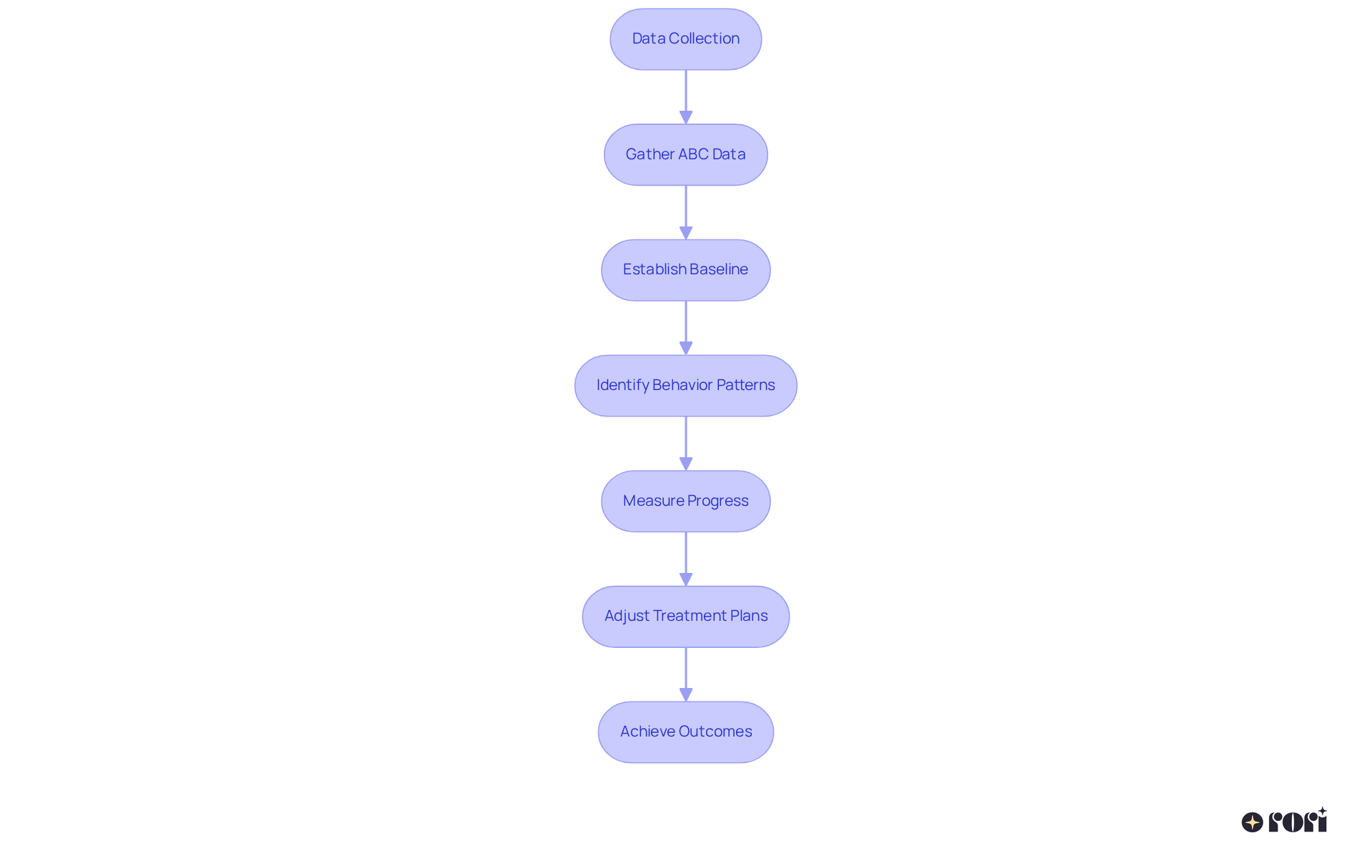
Effective communication is a key component of successful ABA therapist skills in treatment! It allows therapists to utilize ABA therapist skills to engage in open and constructive conversations with parents and caregivers. When families receive frequent updates on their child's progress and actively participate in the treatment process, it empowers them. This collaboration creates a nurturing environment that builds trust and connection.
It's so important—studies show that when parents are involved, treatment results improve significantly! This not only strengthens the skills learned during sessions but also fosters youth development at home. By prioritizing clear and transparent dialogue, professionals enhance their relationships with families and create a supportive structure that truly benefits everyone involved, highlighting their ABA therapist skills. Let’s explore this together!

Empathy is essential for developing effective ABA therapist skills. It allows professionals to truly understand a young person's perspective. Take Valentina Zea, for example—she's an Autism Case Manager at Rori Care, and her dedication shines through her work with ABA interventions, aiming to improve the lives of individuals facing developmental challenges. 🌟
By recognizing the unique feelings and hurdles that individuals with autism experience, professionals can tailor their methods to better meet personal needs. This empathetic approach creates a safe and supportive space, which is essential for fostering learning and growth. Research shows that early intervention with ABA therapy can lead to remarkable improvements in communication and behavior, especially when ABA therapist skills are employed to focus on grasping the young individual's viewpoint. When kids feel understood and valued, they’re more likely to engage positively in the therapeutic process, paving the way for meaningful behavioral changes and better outcomes.
Moreover, the compassionate approach of Rori Care's clinical leadership team, including experts like Monica James, RBT, underscores the importance of equipping caregivers with ABA therapist skills and strategies to support their children's behavioral goals. Let’s explore this together! We’re here to help you every step of the way! 😊
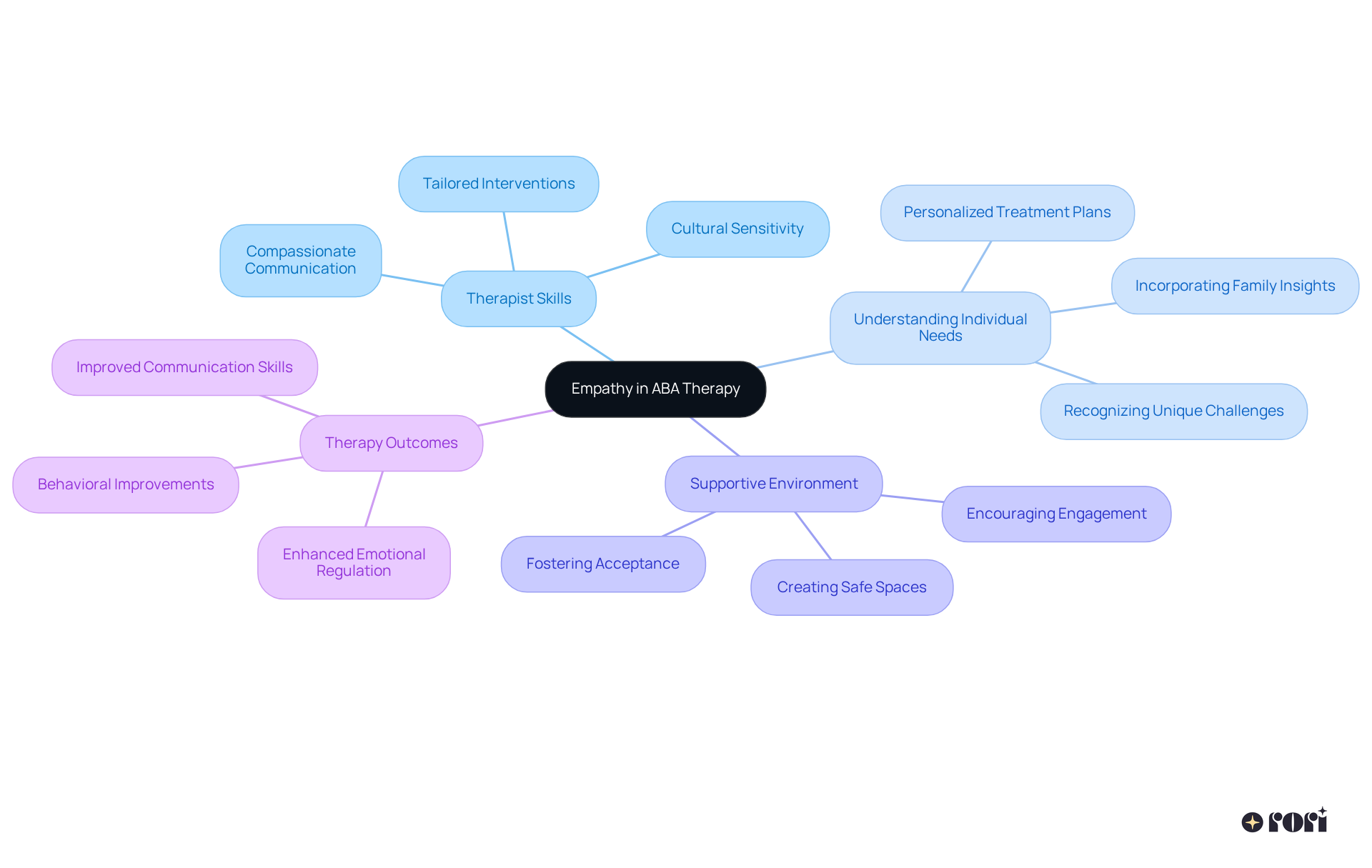
The success of ABA treatment heavily relies on behavior assessments and the development of ABA therapist skills. They provide a structured way to observe and understand an individual’s unique strengths, weaknesses, and behavioral challenges. By getting to know what influences a young person’s behavior, practitioners can create targeted interventions that truly meet their needs. This personalized approach not only makes therapy more effective but also helps in developing essential ABA therapist skills that encourage meaningful developmental progress.
With the help of advanced AI technology, Rori Care - ABA Therapy is making these assessments even more efficient. By automating progress report generation, therapists can now spend 50% more time focused on direct treatment. Isn’t that amazing? Studies show that early intervention through ABA can lead to significant improvements in communication and social skills. In fact, about 66% of individuals referred for ABA continue with services for 12 months.
It’s also heartening to see that individuals with lower initial adaptive levels often show remarkable progress. Research indicates that for each year spent in ABA, there’s an average rise of 4.46 points in adaptive behavior. This really underscores how crucial behavior assessments are in pinpointing specific needs and ensuring that interventions are both relevant and impactful.
However, it’s important to acknowledge the challenges we face in service delivery. Currently, only 28% of individuals receive a full ABA dose. Despite this, maximizing the effectiveness of therapy through the use of ABA therapist skills remains a top priority. Let’s explore this journey together and see how we can make a difference!
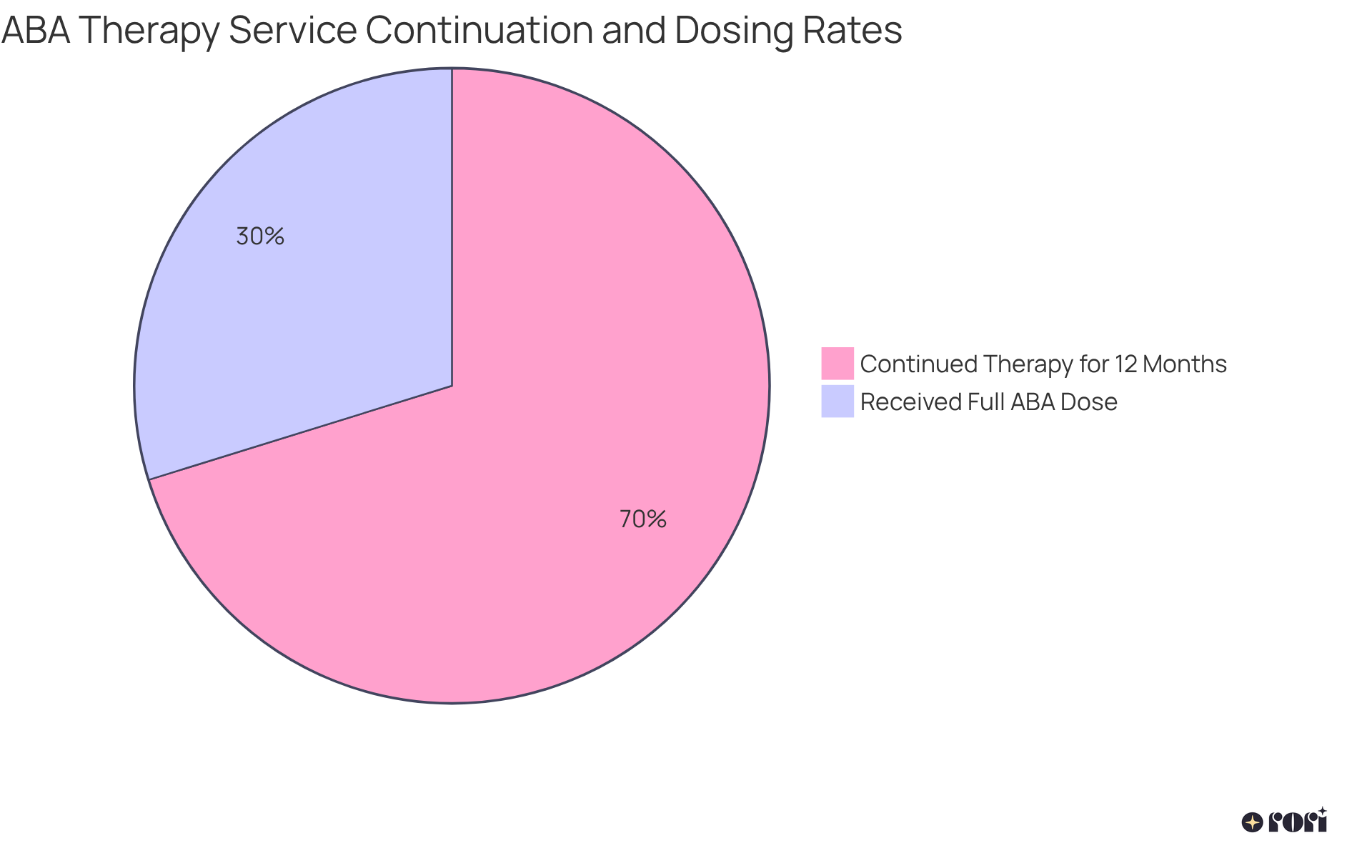
Implementing effective ABA therapist skills involves careful planning and execution. Therapists need to apply ABA therapist skills by using evidence-based techniques tailored to each individual's unique needs. This ensures that interventions are delivered consistently and effectively. By focusing on the individual, we harness the science of learning and behavior to make a real difference.
Involving caregivers in the process is key! When parents are engaged, we see notable progress in 90% of children, especially when the recommended hours are fully implemented. This might include reinforcement strategies, modeling desired behaviors, and providing structured opportunities for practice. By adhering to the principles of fidelity in intervention execution, ABA therapist skills can significantly enhance the chances of positive behavior change and skill acquisition.
Research shows that maintaining high fidelity in ABA practices leads to improved outcomes. Why? Because it ensures that interventions are executed as intended, maximizing their effectiveness. Plus, continuous data gathering and evaluation are essential for tracking progress and making necessary adjustments to treatment strategies. This ultimately creates a nurturing atmosphere for the individual's growth.
And here’s an exciting part! The incorporation of advanced AI technology means automatic progress report creation, freeing up 50% more time for child treatment. This not only enhances the overall effectiveness of ABA but also gives therapists more time to focus on what truly matters—your child.
It’s also important to recognize that the skills of an ABA therapist are effective in enhancing communication, social skills, and overall functioning in individuals with autism. Furthermore, it's vital to highlight that ABA intervention is the only scientifically validated form of treatment for autism that is covered by insurance. Let’s explore this together! We’re here to help you every step of the way!
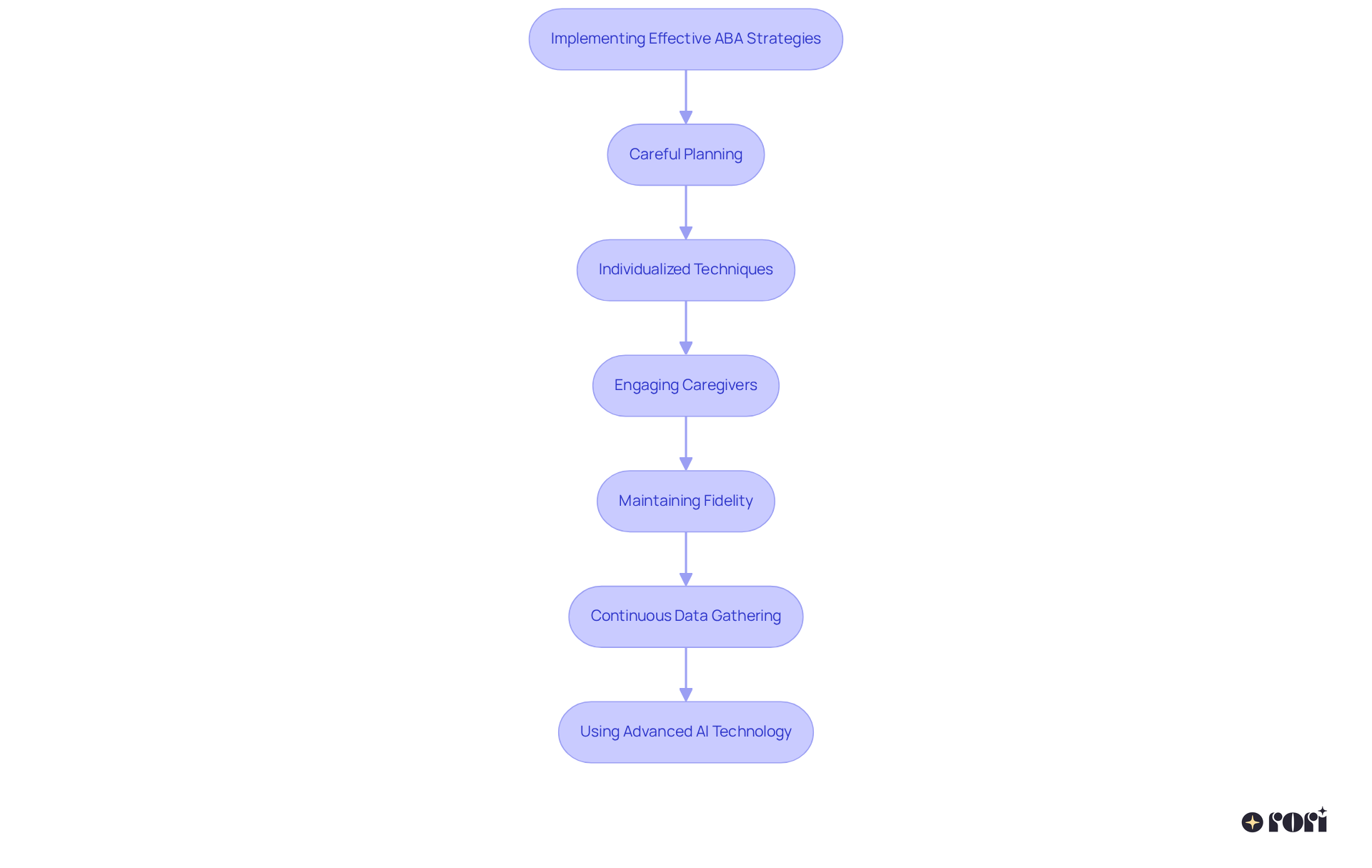
Parent training is such an important part of ABA support at Rori Care! It allows families to actively engage in their child's development. Our clinicians provide personalized training sessions that equip parents with the knowledge and ABA therapist skills necessary to implement ABA strategies at home, creating a strong support system that reinforces learning.
During these sessions, we typically cover essential topics like:
On average, parents enjoy about 89.6 minutes of training spread across 13.3 sessions. This highlights the commitment that's needed for effective parent training, and it’s truly rewarding!
This collaborative approach not only boosts the overall effectiveness of treatment but also builds parents' confidence, empowering them to support their child's progress. Research shows that children whose parents are actively involved in counseling sessions often make remarkable strides in communication, social skills, and overall behavior, with a combined effect size of 0.553 for parent-implemented interventions.
Moreover, parent training at Rori Care has been shown to reduce parental stress and enhance self-efficacy, creating a positive feedback loop that benefits both the child and the entire family. By focusing on parent engagement and equipping caregivers with ABA therapist skills, principles, and strategies, Rori Care ensures that ABA interventions can achieve more meaningful and lasting results for individuals with autism.
So, why not consider scheduling a training session with our clinicians? Let’s explore this together and start implementing these strategies at home!
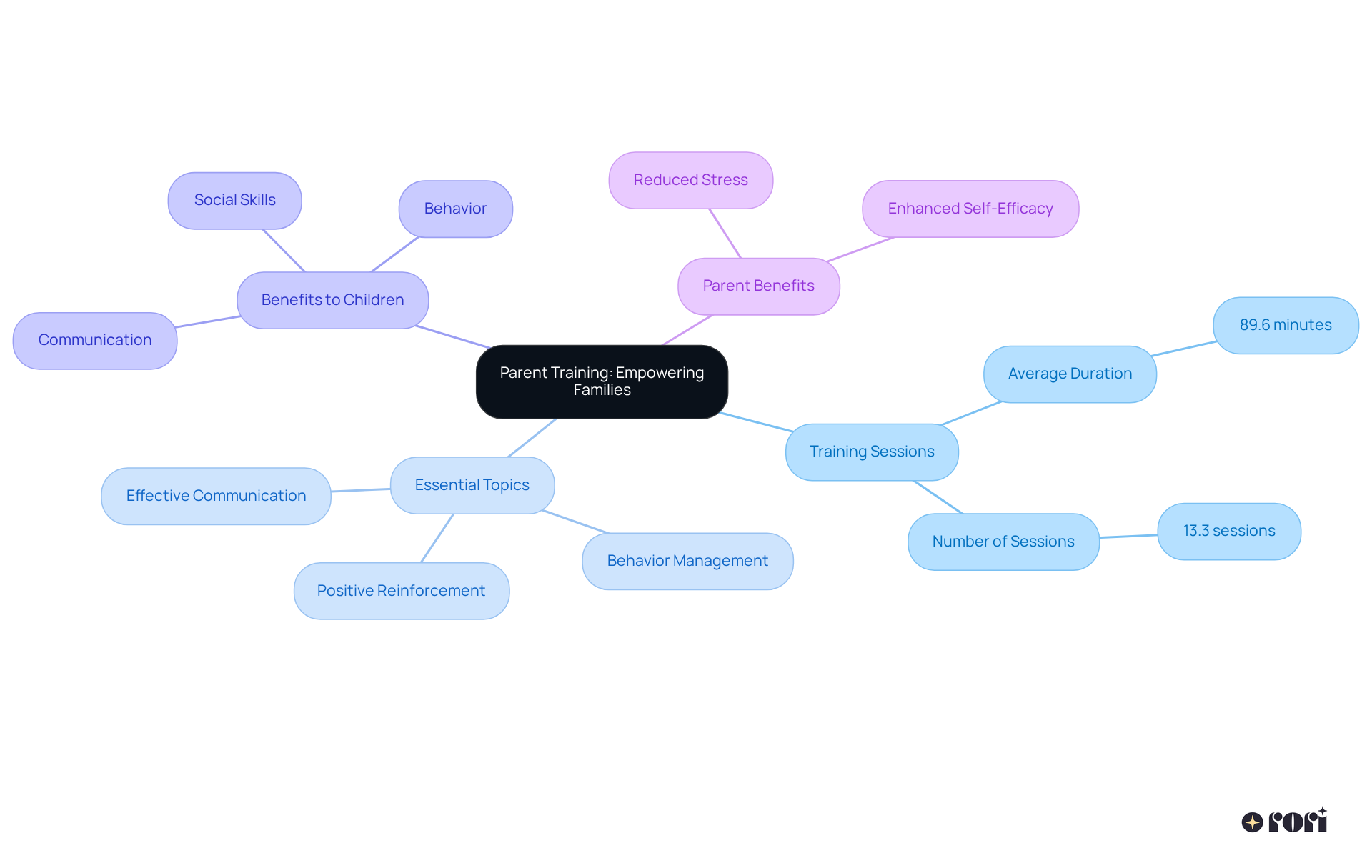
Adaptability is truly the cornerstone of successful interventions that highlight ABA therapist skills! It allows practitioners to tailor their approaches to meet the unique needs of every young individual. This means modifying interventions based on how each child responds, their preferences, and their progress, which reflects the importance of ABA therapist skills to ensure therapy stays engaging and effective.
By using data-informed strategies and evidence-backed methods, professionals can create personalized treatment plans that enhance the educational experience for young learners. Each behavioral plan is designed specifically to fit the individual’s unique needs, strengths, challenges, and goals, with clear and measurable objectives set for behavior change and skill development.
As the demand for certified ABA professionals grows, having effective ABA therapist skills to adapt strategies is becoming even more important. Early behavioral interventions have shown positive outcomes, and by embracing this flexible approach, therapists can help nurture a sense of autonomy and confidence in young individuals.
Plus, with the incorporation of advanced AI technology, creating automatic progress reports frees up 50% more time for youth treatment! This flexibility empowers young individuals to actively participate in their development as they navigate their therapeutic journey, ultimately leading to even more successful outcomes. Let’s explore this together!
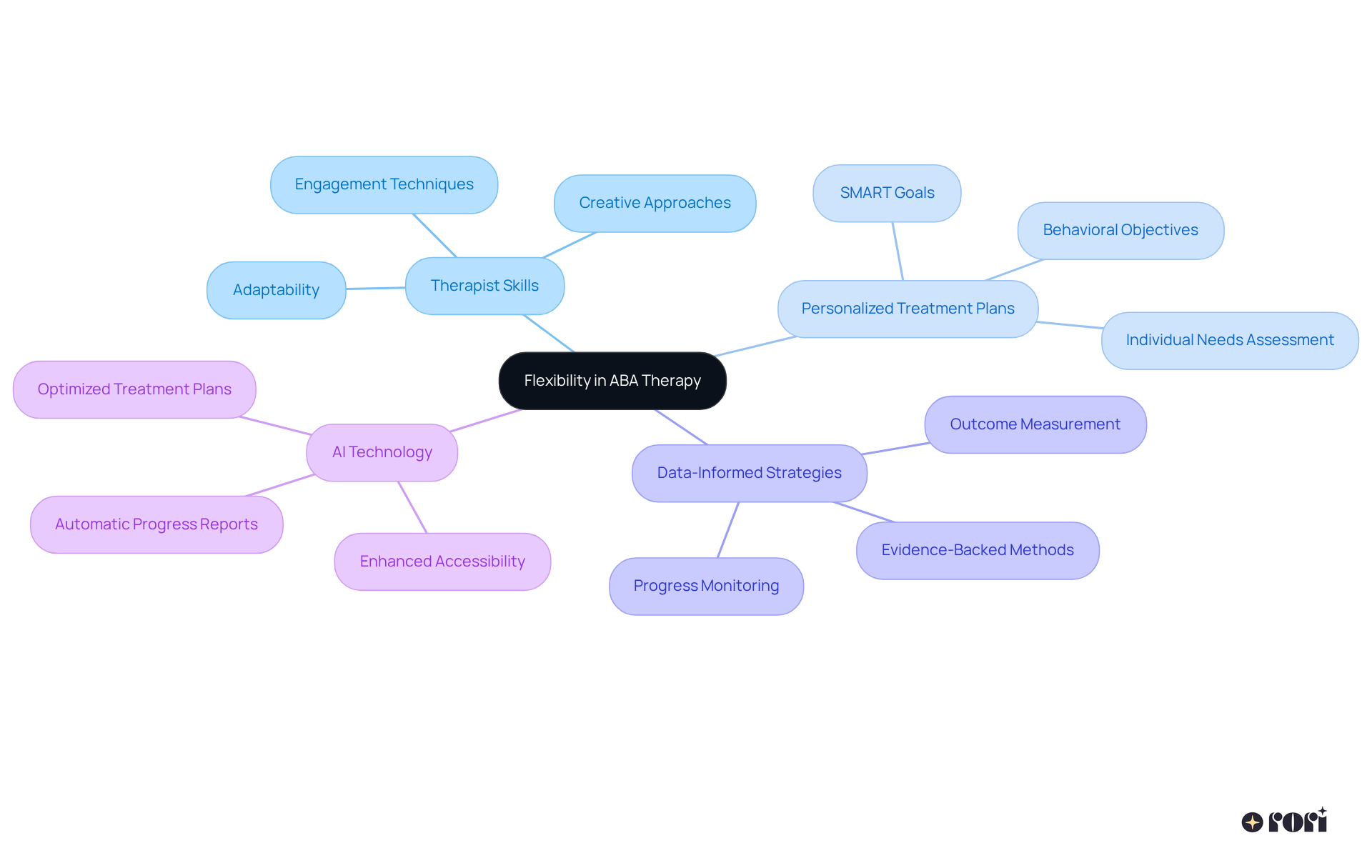
Cooperation is essential for providing the best support to youth with autism. At Rori Care, we’re all about empowering your child with the skills they need to explore the world independently. Our approach is not just comprehensive; it’s filled with compassion. By teaming up with experts like speech therapists, occupational therapists, and educators, our ABA therapists, who utilize essential ABA therapist skills, including talented Registered Behavior Technicians like Monica Ewing and Autism Case Manager Valentina Zea, craft detailed treatment plans that cover every aspect of a young person’s growth.
This collaborative approach aligns interventions and boosts the overall support we provide. Studies show that these cooperative efforts lead to better treatment outcomes, helping 90% of youth make significant strides in communication, social skills, and independence, especially when caregivers are actively involved and insurance support is in place. When professionals work together, like our dedicated team members Kristine Le and Dr. Jesslyn Nicole Farros, we ensure that each child's unique needs are met. This teamwork transforms their therapeutic journey and enhances their quality of life.
As Lina Slim highlights, effective collaboration hinges on interdependence and leveraging each team member’s expertise. Plus, the IPEC Framework lays out core competencies for interprofessional collaborative practice, giving us a solid foundation for implementing collaboration in ABA therapy that enhances ABA therapist skills. Parents can play a crucial role in this process by encouraging open communication with all team members involved in their child's care. Let’s explore this together, and remember, we’re here to help you every step of the way!
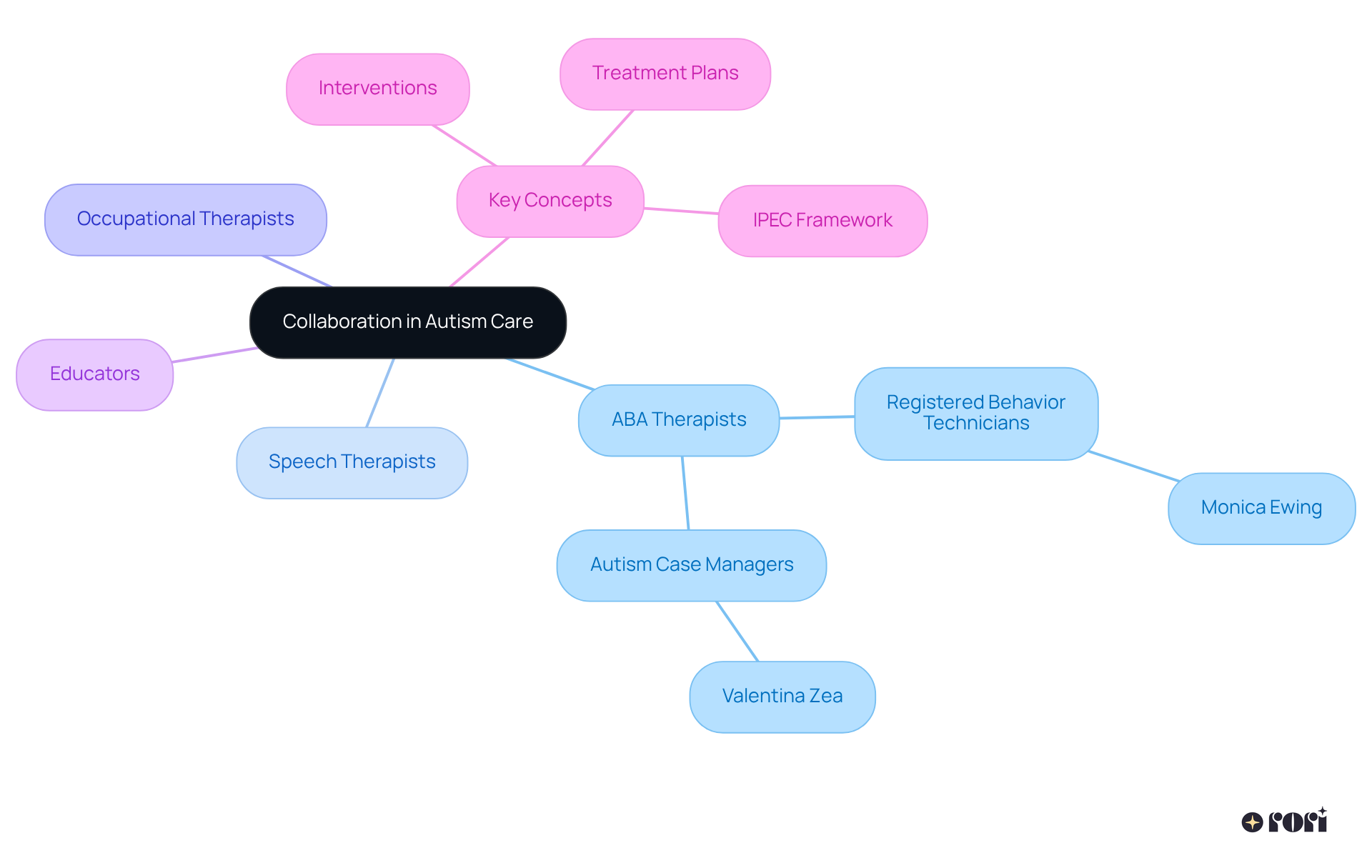
Ongoing education is super important for ABA professionals to enhance their ABA therapist skills and stay ahead with the latest techniques and research in the field. Engaging in professional development opportunities—like workshops, training programs, and conferences—helps therapists refine their ABA therapist skills and expand their knowledge base. This commitment to continuous learning not only boosts their ability to provide effective, evidence-based interventions but also significantly improves client results in ABA.
Did you know that 50% of the time spent in ABA therapy goes to writing reports? With advanced AI technology, professionals can now automate progress report creation, freeing up precious time for direct treatment of young clients. This efficiency allows them to focus more on personalized care while empowering caregivers with ABA principles and strategies to support children's behavioral goals through active involvement and data collection.
Research shows that companies investing in employee training are twice as likely to retain their employees, and organizations with comprehensive training programs see 218% higher income per employee than those without. By prioritizing professional growth and accumulating Continuing Education Units (CEUs), ABA therapists can improve their ABA therapist skills to ensure they are equipped to meet the evolving needs of their clients and provide the highest quality of care. Let’s explore this together and see how ongoing education can make a difference!
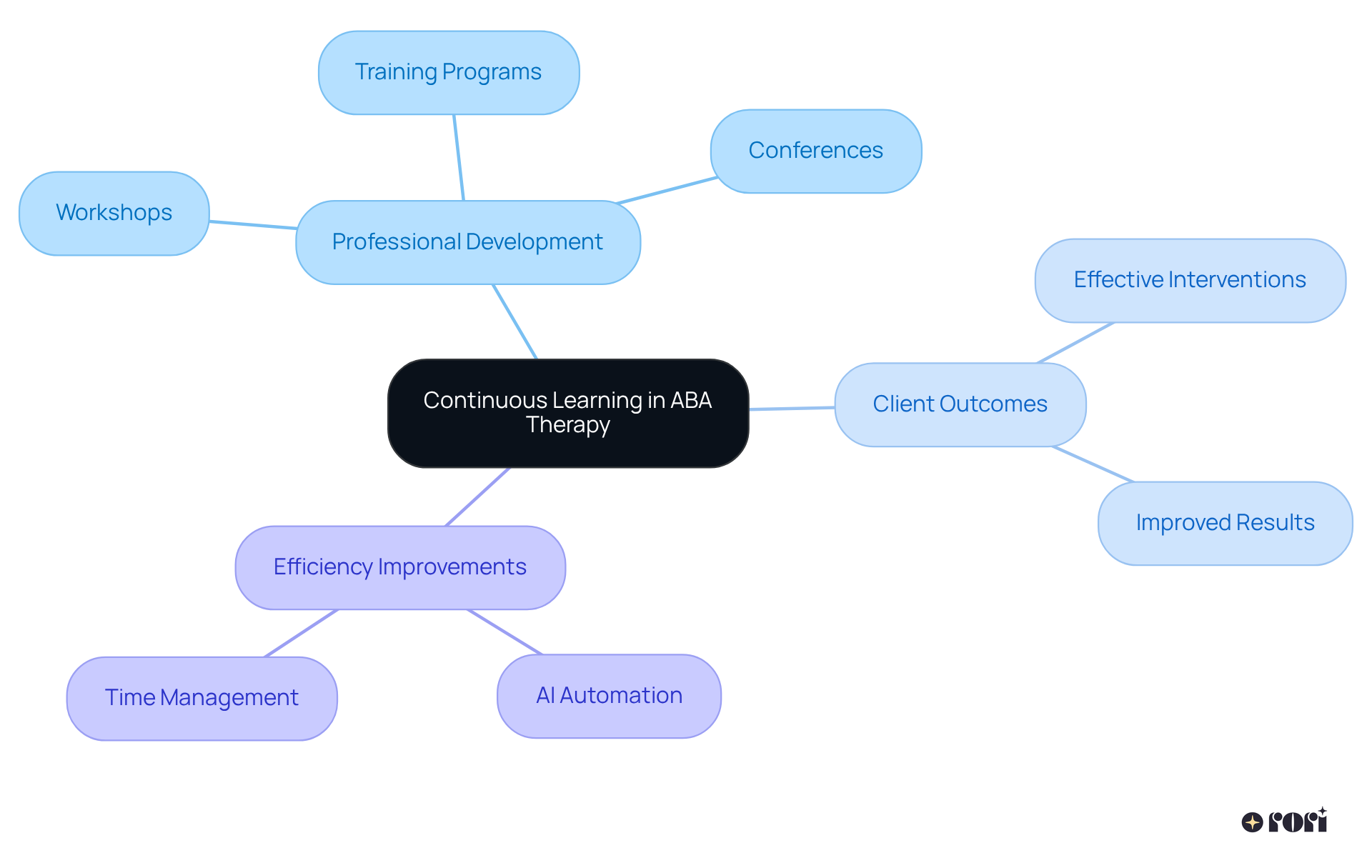
Supporting children with autism is truly a journey that requires a special set of skills from ABA therapists. These skills—like creating personalized treatment plans, collecting data, and communicating effectively—are essential for enhancing treatment outcomes. By focusing on empathy, behavior assessments, and parent training, therapists can create a nurturing environment that helps children grow and thrive.
Throughout this article, we’ve highlighted how important it is to tailor interventions to meet each child’s unique needs. We also explored the role of data in tracking progress and the necessity of involving parents in the therapeutic process. These elements work together to create a comprehensive approach that not only improves behavioral outcomes but also strengthens the bond between therapists, children, and families. Plus, the integration of advanced technology makes therapy even more efficient, allowing therapists to provide direct support to young clients.
Ultimately, supporting children with autism is a collaborative effort that requires commitment from both professionals and families. By embracing these essential ABA therapist skills, caregivers can empower their children to thrive. It’s all about ensuring that they receive the best support possible on their path to independence and a better quality of life. Let’s explore these strategies together and see how implementing them in daily practice can truly make a difference in the lives of children and their families. We’re here to help you every step of the way!
What is the importance of personalized treatment plans in ABA therapy at Rori Care?
Personalized treatment plans are essential for enhancing ABA therapist skills and ensuring effective outcomes. They allow behavior analysts to identify each child's unique needs, create tailored plans with measurable goals, and apply evidence-based strategies, leading to significant improvements in behavior and social skills development.
How does Rori Care utilize technology in their ABA therapy?
Rori Care embraces cutting-edge AI technology to streamline the therapy process, including automatic progress report generation. This innovation frees up 50% more time for direct youth treatment, ensuring that interventions remain responsive and effective.
Why is early intervention important in ABA therapy?
Early intervention is crucial as it has been shown to yield particularly beneficial results for children on the spectrum. It empowers caregivers with the knowledge and tools needed to support their child's behavioral goals.
What methods are used for data collection in ABA therapy?
Effective data collection methods include ABC data collection, which tracks Antecedent, Behavior, and Consequence. This systematic approach helps understand behavior patterns, identify triggers for challenging behaviors, and measure progress over time.
How long should ABC data be collected to ensure accurate analysis?
Collecting ABC data for at least two weeks is recommended to accurately spot trends and patterns in behavior, establish a baseline, and measure the effectiveness of treatment strategies.
What is the significance of interobserver agreement (IOA) in data collection?
Aiming for high levels of interobserver agreement (ideally 80% or higher) boosts the reliability of data collection, ensuring confidence in the insights gained. Involving multiple observers, such as counselors, educators, and parents, is essential for accuracy.
How does effective communication benefit the treatment process in ABA therapy?
Effective communication fosters open and constructive conversations between therapists and parents, empowering families and building trust. When parents are involved and receive frequent updates, treatment results improve significantly, enhancing youth development at home.
What role do parents play in the ABA therapy process?
Parents play a crucial role by maintaining open dialogue with counselors, recognizing the importance of regular data gathering, and actively participating in their child's treatment journey, which leads to better outcomes.